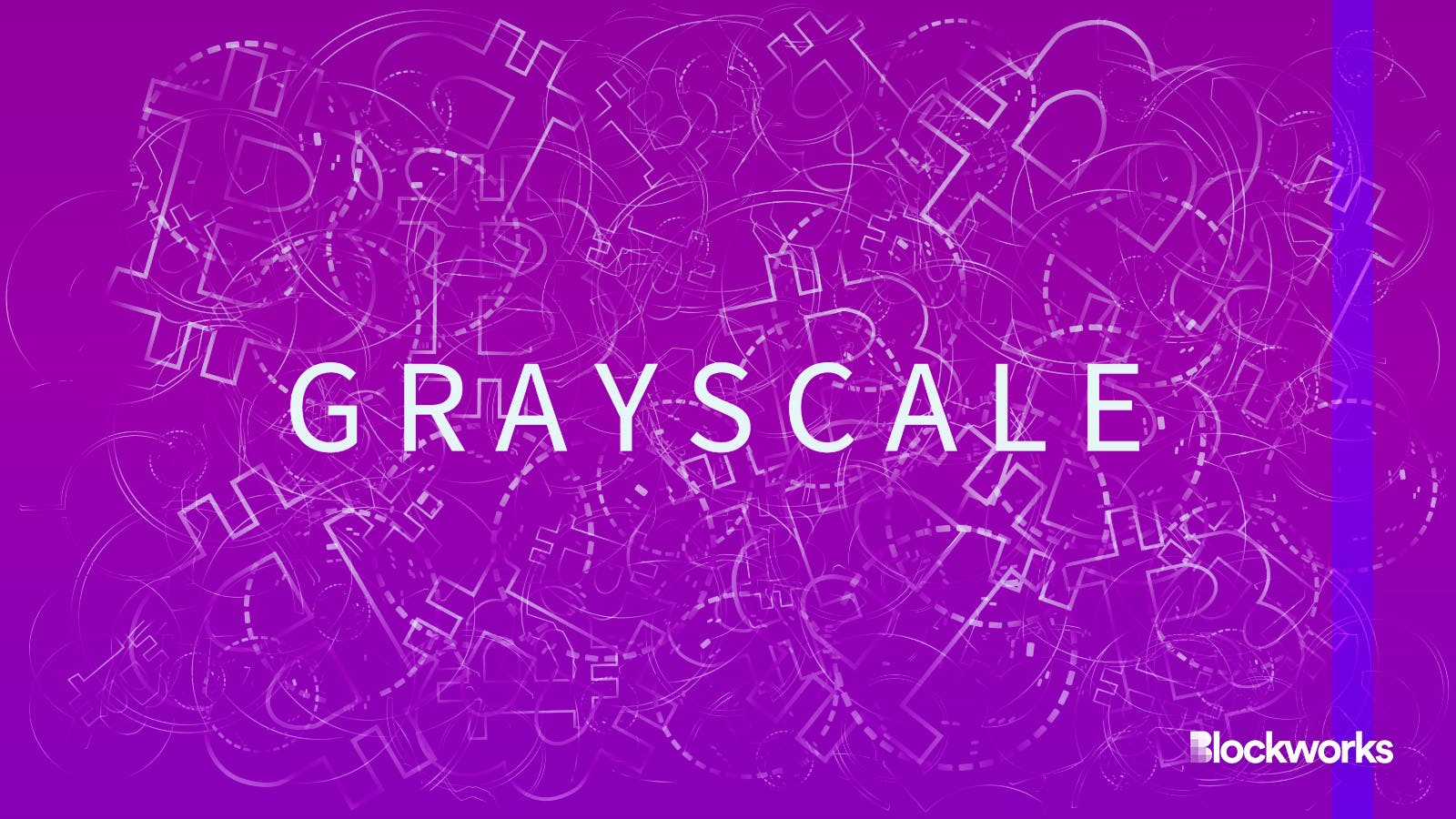As GBTC outflows continue, will the largest bitcoin ETF be dethroned?
Surpassing the Grayscale fund’s assets under management would be a “challenging feat” for rivals like BlackRock and Fidelity, analyst says

Grayscale and Vladimir Kazakov/Shutterstock modified by Blockworks
Grayscale Investments’ bitcoin trust continues to see net outflows two weeks after converting to an ETF, shrinking the hefty asset advantage it has over rivals.
Still, analysts believe it could be a while before the Grayscale fund relinquishes its title of the largest spot bitcoin ETF.
The Grayscale Bitcoin Trust ETF (GBTC) saw $515 million in net outflows on Tuesday, according to Bloomberg Intelligence data — bringing its net outflow total to nearly $4 billion since converting to an ETF on Jan. 11.
Read more: Bitcoin ETF Tracker
GBTC’s assets stood at about $21 billion at midday Wednesday, according to the firm’s website.
Meanwhile, competing bitcoin ETFs by BlackRock and Fidelity had grown their asset bases to about $1.85 billion and $1.6 billion, respectively, as they have notched net inflows daily.
Some foresaw GBTC’s asset bleeding given the fund’s 1.5% fee. The price point was reduced from 2% upon converting to an ETF, though remains significantly higher than competing offerings with expense ratios ranging from 0.19% and 0.39%.
Read more: Why the planned fee for Grayscale’s bitcoin ETF is much higher than others
Matteo Greco, research analyst at Fineqia International, said given GBTC’s pre-ETF structure — restricting redemptions to only allow selling shares on the secondary market at a significant discount — he expected the highest outflow activity to occur within the first few weeks of trading as an ETF.
But surpassing GBTC’s assets under management will be a “challenging feat,” he told Blockworks, adding that the pace of competitor inflows and GBTC outflows are likely to decelerate.
“Given GBTC’s [public quotation] in 2015, boasting over eight years of competitive advantage, it is anticipated that GBTC will continue to dominate AUM for a considerable duration,” Greco said. “Dethroning GBTC could be a lengthy process.”
The fund officially launched two years prior in 2013. Grayscale’s court victory over the Securities and Exchange Commission last August served as a catalyst for the long-awaited approval of US spot bitcoin ETFs.
“GBTC has already cemented its place as the go-to bitcoin ETF in the United States for investors who value market-leading liquidity, tight spreads and a decade-long track record of operational success,” a Grayscale spokesperson told Blockworks.
The fund’s trading volumes totaled nearly $11 billion after eight days of trading, accounting for more than half the volumes seen for such ETFs.
John Hoffman, Grayscale’s managing director of sales and distribution, previously said that because large capital markets ETFs are used in a variety of investing strategies, “we anticipate GBTC’s diverse shareholder base will continue to deploy strategies that impact inflows and outflows.”
Why investors might remain in GBTC
Bryan Armour, a director of passive strategies research at Morningstar, said while he expects GBTC’s assets to continue to drop, there remains a portion of investors who are either unaware of other options or uninterested in switching.
Armour added that because many are buying the nine other US spot bitcoin ETFs and selling GBTC, traders can sell those funds at a premium and buy GBTC at a discount via a process called pairs trading.
“Traders will rely on GBTC less as markets normalize and assets grow in the new nine — especially the biggest ones like iShares and Fidelity,” he said. “GBTC will no longer be necessary once order flow becomes two-sided in the new ETFs.”
Other investors are thinking about capital gains, analysts said, as some face large tax bills if they switch to another ETF.
Most customers who bought GBTC in the past would realize a profit upon selling the shares, thereby initiating the taxable event, Greco explained.
Read more: FTX estate sells majority of GBTC holdings: Reports
“Consequently, even if these customers were to transfer their funds to a more cost-effective ETF, they would do so with a reduced amount of BTC, making the transfer less favorable,” Greco added.
The capital gains grow smaller as bitcoin’s price keeps dropping, Armour said, making it easier for investors to switch. Bitcoin (BTC) was at roughly $39,800 at 3:30 pm ET on Wednesday — down 6.6% in the last week but up 1.3% over the last 24 hours.
“A declining bitcoin is extra bad for GBTC,” Armour said.
A Grayscale spokesperson noted in a Wednesday statement that the firm lowered its fee — “as promised” — upon uplisting GBTC to NYSE Arca. Grayscale did not comment on whether it is considering decreasing its fee further.
“I don’t expect them to cut their fee significantly because I think it’s too late to compete on price,” Armour said. “They can probably make more money by charging a high fee and riding out a declining asset base.”
Get the news in your inbox. Explore Blockworks newsletters:
- The Breakdown: Decoding crypto and the markets. Daily.
- 0xResearch: Alpha in your inbox. Think like an analyst.






